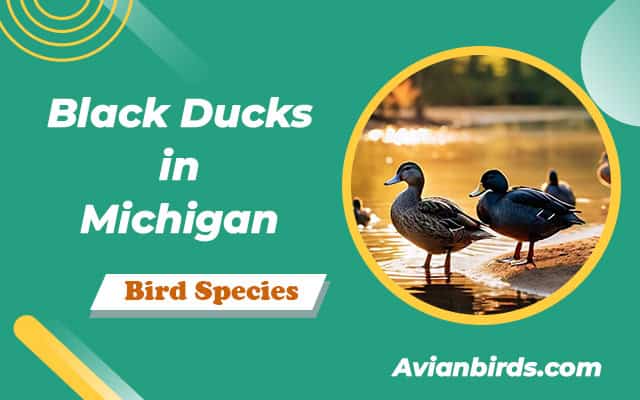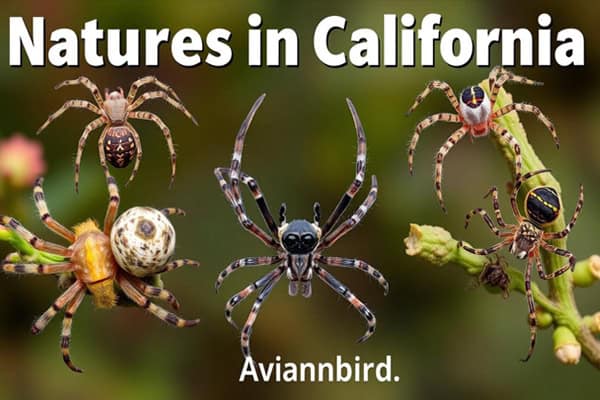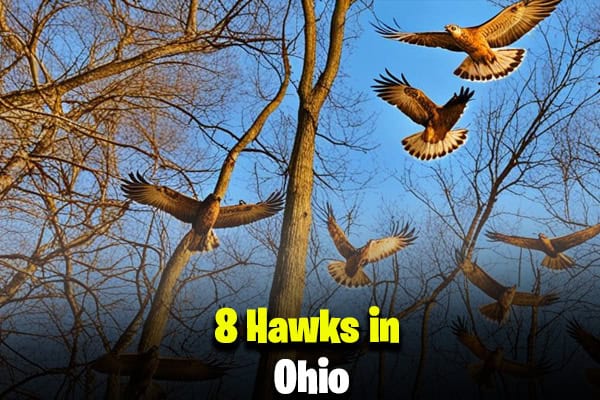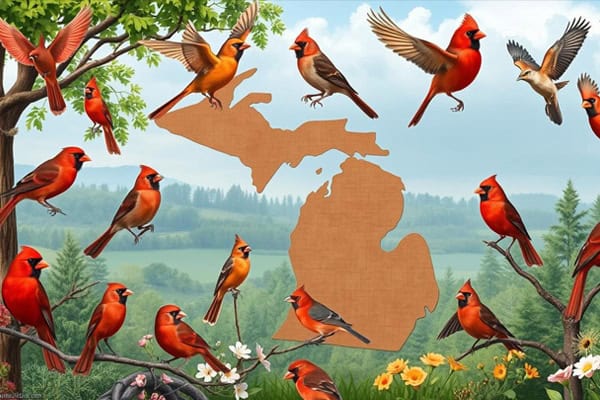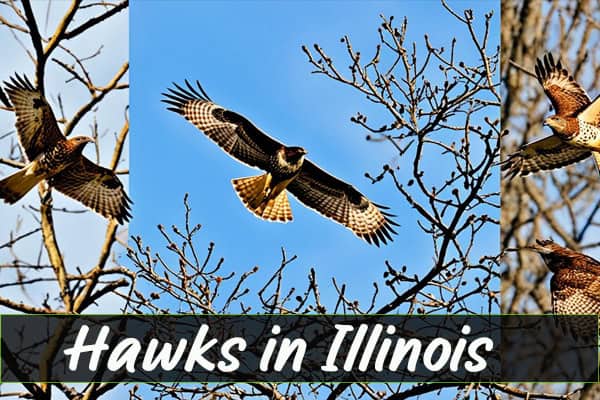18 Black Ducks in Michigan (ID Guide With Pictures)
Welcome to the wonderful world of black ducks in Michigan! Nestled in the picturesque Great Lakes region, Michigan is a paradise for waterfowl enthusiasts. From the charm of their ebony feathers to their intriguing behaviors, black ducks add a touch of magic to the waterways of this beautiful state. Join us as we dive into the wonders of black ducks in Michigan and discover the delights of these captivating creatures.
Here We’ll Learn About 18 Different Types of Black Ducks in Michigan
1. American Black Duck
American Black Ducks look a lot like female Mallards, but they’re a bit smaller. Their feathers and the stripes around their eyes are darker than those on female Mallards. They have bills that are kind of gray and legs and feet that are orange.
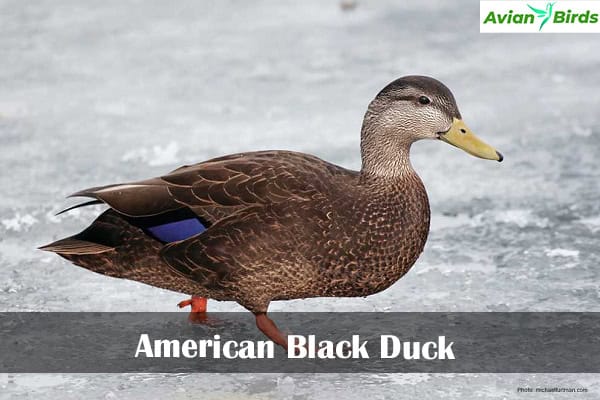
These ducks have a shiny purple-blue patch on their wings. They live in Michigan all year.
American Black Ducks often mix with Mallards, so many ducks are a mix of both. Just like Mallards, American Black Ducks make a quacking sound. They build their nests on the ground and eat seeds, but they also enjoy some animal food like insects and small water creatures.
2. Mallard
Mallards are a type of duck that you see a lot in Michigan. They’re known for the male’s bright green head and pretty feathers that really stand out in Michigan’s winter.

When it’s cold, mallards like to swim in places where the water hasn’t frozen, like lakes and ponds. You can tell the males, or drakes, by their green heads. They look different from the females.
Mallards stay in Michigan during winter because it’s not as cold as some other places. They look for spots where the water is still liquid so they can find things to eat and stay safe.
The males usually have brown feathers that help them hide from animals that might want to catch them. This way, they can stay safe but still look nice.
3. Wood Duck
Wood ducks are really pretty ducks that live in the marshes and wetlands of Michigan. Also, They have amazing feathers that are blue-green, chestnut, and white, which make them stand out, even though their underwings might not be as bright.

These ducks are great at living in wet places. They have long claws for sitting on branches and they make their homes in holes in trees. Moreover, They use their strong, curved bills to find food like plants, bugs, and tiny water animals in the marshes.
A cool thing about wood ducks is the black end on their tails. It looks really nice with its colorful feathers. Also, male wood ducks have red eyes and female wood ducks have yellow eyes, so you can tell them apart.
When it’s time to find a mate, the male wood ducks show off their pretty feathers by moving their heads around. This helps them get attention from the girl ducks. After they find a mate, they stay together for the whole breeding season.
4. American Wigeon
American Wigeons are short, round ducks with pinkish-brown bodies and small bills.

The male ducks have a white or light tan line on their foreheads and a shiny green spot that starts behind their eyes. The female ducks have heads that are a plain gray color. The females make a deep quacking sound, but the males make a whistling noise. You’ll often hear these ducks before you see them.
Like other ducks that feed by tipping forward in the water, American Wigeons eat plants from ponds and build their nests on the ground.
5. Gadwall black ducks in Michigan
Gadwalls are sturdy ducks with gray-brown feathers and yellow feet. They’re often seen in Michigan when they’re moving to different places.
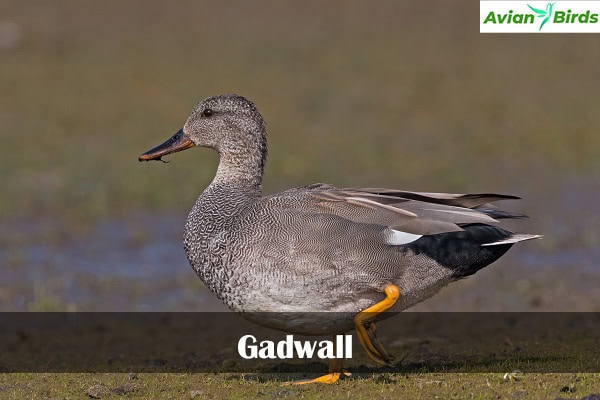
During the breeding season, the boy ducks have black feathers on their bottoms. So, if you spot a brown duck with a black bottom, it’s a male Gadwall.
If you see these ducks with black bottoms, the plainer brown ducks nearby are probably the girl Gadwalls.
Like many other ducks that feed by tipping forward in the water, Gadwalls build their nests on the ground.
6. Ring-necked Duck
Ring-necked Ducks are medium-sized ducks that you can find in freshwater. They’re common visitors to Michigan, especially in the fall and winter.
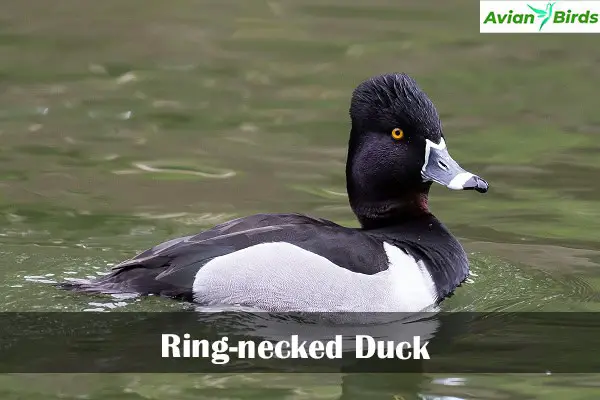
The male duck has a black head with a little bump on top, a black back and bottom, and a light gray body. He has a special white mark between his body and chest, and a white line near his head. His bill is light gray with a black end.
Even though they’re called Ring-necked Ducks, the ring on their neck is brown and really hard to see unless you’re close.
The female duck has a medium-gray back and a light brown body. She has a white ring around her eye and a white spot near her bill, just like the male.
Ring-necked Ducks build their nests near the edges of marshes that have lots of trees. They mostly eat water plants, but they also like clams and snails.
7. Lesser Scaup
Lesser Scaups are ducks that live in freshwater like ponds, lakes, and bays. They mostly eat clams and plants.
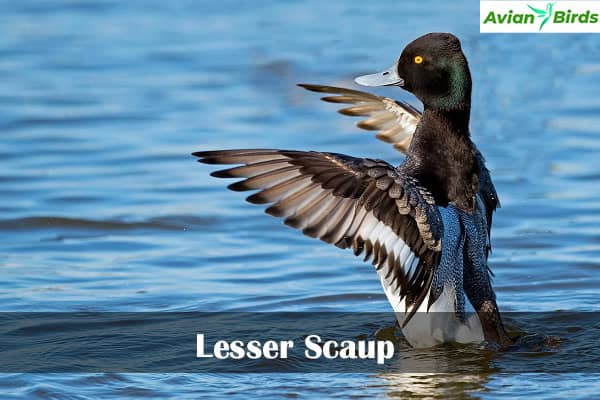
In Michigan, you can see these ducks when they are traveling to different places.
The male ducks have blackheads that can look purple in some lights. They have black necks and chests, light gray backs with white and black patterns, more white on their bodies, and bigger black tails. They have blue bills but no white lines near their heads.
The female ducks have a white half-moon shape around their bills, dark brown heads, necks, and chests, and their bodies are brownish-gray with darker brown backs. Their heads are kind of square.
Lesser Scaups build their nests close to lakes and ponds where there are lots of water plants. They eat the same things as the boy ducks, which include clams and plants.
8. Greater Scaup
Greater Scaups are ducks that you can find in salty water areas like bays and lakes. They usually hang out in big groups. In Michigan, these ducks are around during the winter.
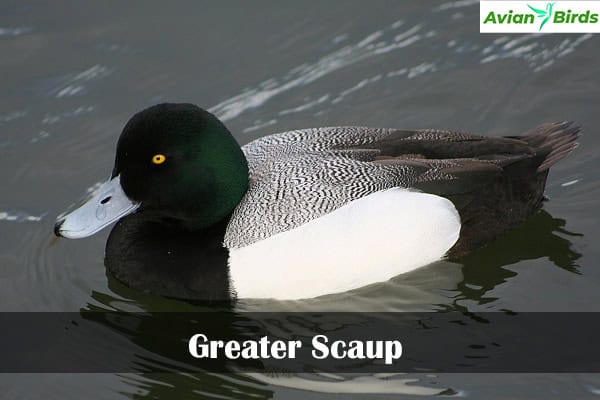
The male ducks have black heads that might look green when the light hits them just right. They have black necks and chests too. Their backs are light gray with white and black patterns, and they have big black tails. Their bills are blue, but they don’t have a white line near their heads.
The female ducks have a white half-moon shape around their bills, dark brown heads, necks, and chests, and their bodies are brownish-gray with darker brown backs.
Greater Scaups are a lot like Lesser Scaups, and it’s tough to tell them apart. One thing about Greater Scaups is that their heads are round, and sometimes they look like they’re leaning back a bit. This might help a little when you’re trying to figure out which duck is which.
9. Bufflehead
Buffleheads are tiny ducks that dive into both fresh and salty waters when it’s winter.

The boy Buffleheads have a big white spot on the back of their heads, white bodies, and black backs. The girl Buffleheads are mostly gray and black with a white spot on their cheeks.
They like to hang out in little groups and you can see them moving together on the water like a little boat parade.
Buffleheads make their homes in holes, like in trees. They mostly eat things like shellfish, small water animals with shells, and baby insects.
10. Hooded Merganser
Hooded Mergansers, often called “Hoodies” by those who love birds, are small ducks with long, thin bills. They’re usually found around ponds and bays with trees nearby.
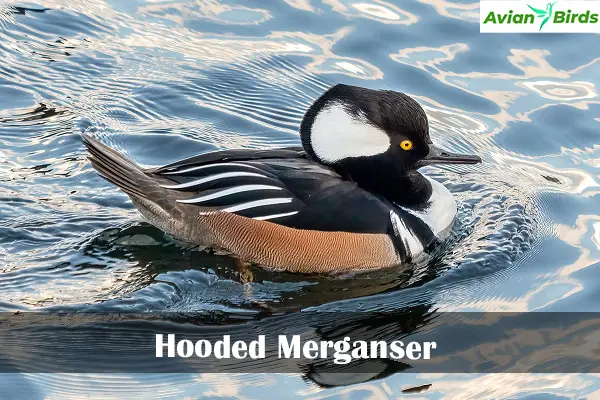
The male Hooded Mergansers have bodies that are a warm cinnamon color, with black heads and backs. They have a special black-and-white pattern on their heads that looks like a hood. This hood can change shape: it’s kind of like a rectangle when it’s down and more rounded when it’s up.
The female Hooded Mergansers have long tails and dark gray bodies. Their heads have lots of light brown feathers that look a bit like frosting and these feathers stretch out behind their heads.
These clever ducks use holes made by woodpeckers to lay their eggs. Hooded Mergansers mostly eat fish, but they also like to snack on small water animals with hard shells and insect babies.
11. Common Merganser
Large Mergansers are ducks with long, thin orange bills. They move smoothly on the water and look very graceful. In Michigan, they live there all year, but you’ll see them more in the fall and winter.
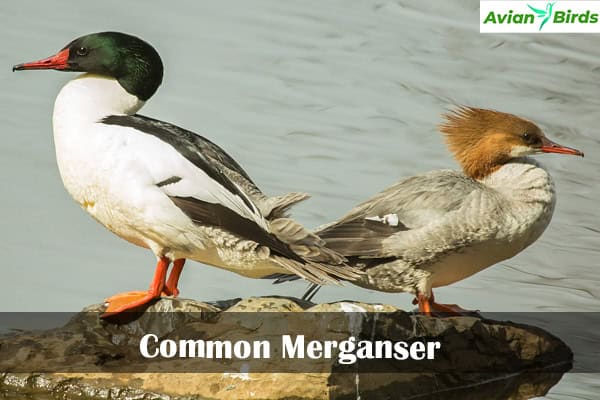
The male ducks have white bodies, shiny green heads, and black backs. The female ducks are gray with reddish-brown heads. They have a little bit of raised feathers on their heads. Even when their feathers are messy, they don’t look as untidy as other female Mergansers like the Hooded and Red-breasted ones.
12. Common Goldeneye
The Common Goldeneye is a duck that’s not too big or too small. It makes its home in the northern woods of Michigan during the breeding season and spends the winter on the state’s lakes and rivers.
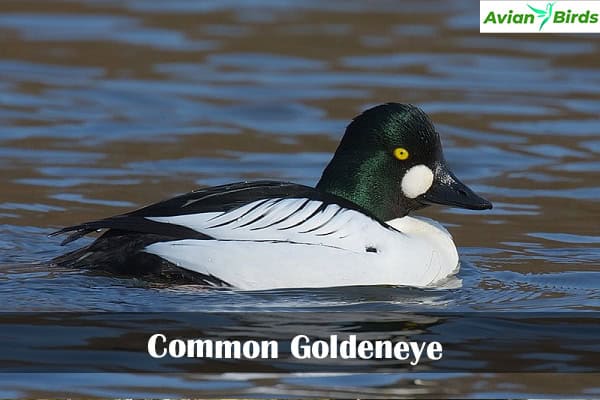
This duck stands out because of its shiny yellow eyes and its black and white feathers. It’s really easy to spot in the winter because of how it looks.
13. Long-tailed Duck
The Long-tailed Duck, also known as the Oldsquaw, is a sea duck that migrates through Michigan during the winter months.

These ducks prefer open waters and can often be found near the Great Lakes coastline, showcasing their unique plumage and long, graceful tail feathers.
14. Harlequin Duck
The Harlequin Duck is a stunning sea duck species that captures attention with its vibrant colors and intricate patterns. While rare in Michigan, these ducks can occasionally be spotted along the state’s northern shorelines, particularly on rocky coastlines and remote islands.
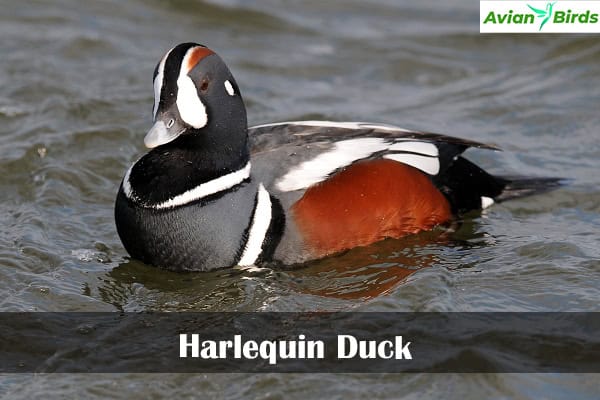
These are just a few examples of the many delightful duck species that inhabit Michigan’s diverse landscapes. Each species brings its own unique charm, adding to the vibrant tapestry of waterfowl in the state. So, grab your binoculars and head out to discover the incredible variety of ducks that call Michigan home.
15. Surf Scoter black ducks in Michigan
Surf Scoters are a kind of sea duck that’s easy to spot near the shore. In the winter, you can find them in the Great Lakes.

The male Surf Scoters are all black with a white spot on their forehead and a bigger one at the back of their head. They have big, colorful bills that are shaped like a triangle and look unique.
From a distance, the bills of the male Surf Scoters look orange, but up close, they’re actually black, white, red, and yellow. The bills are big and round at the base and get narrower at the end, which makes their heads look pointy.
The female Surf Scoters have two white spots on their faces. One is long and thin at the front, and the other is behind and below the eye.
Surf Scoters are usually found where the waves crash onto the beach. They dive underwater to eat things like shellfish, snails, little fish, and water plants.
16. Eurasian Wigeon
Eurasian Wigeons are ducks that look a lot like American Wigeons. The male Eurasian Wigeon has a reddish head with a light tan line starting at the forehead. His chest is a light reddish color, and his sides and belly are light gray when it’s breeding time. When it’s not breeding season, his chest changes to a light brown color.

Female Eurasian Wigeons can be confused with female American Wigeons because they look similar. However, the females from Eurasia usually have a richer brown color on their heads and a gray color under their wings when they fly.
It’s common to see Eurasian Wigeons hanging out with American Wigeons.
17. Northern Pintail
Northern Pintails are graceful ducks with really long tails and necks. They look very neat and tidy.

If ducks were going to a fancy party, Northern Pintails would fit right in. The male duck would just need a bow tie, and the female duck could wear a string of pearls.
The male duck has a brown head and a black bill, with a long white neck and chest, and a gray body. The female duck is a soft brown color with a gray bill. When Northern Pintails fly, you can see a shiny bronze or dark brown patch on their wings.
18. Northern Shoveler
Northern Shovelers are big ducks that are easy to recognize because of their very long bills that look like spoons.
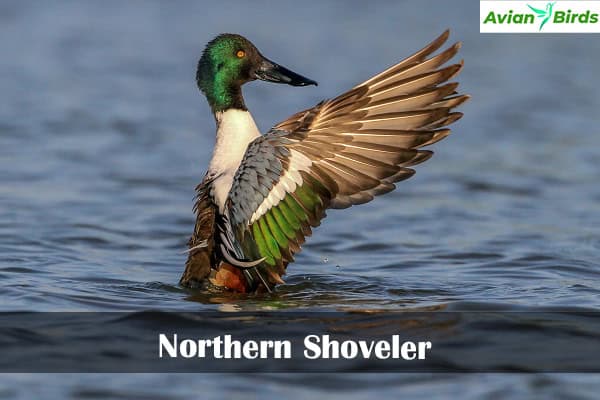
The male ducks have shiny green heads and their chests, breasts, and bottoms are a rich brown color with a chestnut-colored side and belly. The female ducks have a speckled brown look.
What makes the Northern Shoveler stand out is its spoon-shaped bill. For the males, the bill is dark gray, and it turns black when they’re looking for a mate. For the females, the bill is olive green with a bit of light orange. They use their big bills to sift through the mud to find food like seeds, tiny water creatures, water bugs, and small shellfish.
Northern Shovelers build their nests on the ground. The females make a short, deep quacking sound, while the males sound more like they have a cold.
Check Our Previous Articles:
Spotting Black Ducks in Michigan
In Michigan, the best spots to see ducks are places with water, like ponds, lakes, bays, beaches, and the Great Lakes. Ducks love areas with lots of water plants and room to swim, so look for them in rivers, marshes, wetlands, and along beaches and shorelines.
Many ducks visit Michigan in the winter, but some stay all year. Mallards, Wood Ducks, Gadwall, Green-winged Teal, Lesser Scaup, and Ruddy Ducks live in Michigan throughout the year. The three types of Mergansers also stay all year. Blue-winged Teal ducks only come during the spring and fall migrations.
For a great duck-watching experience, check out the National Wildlife Refuges (NWRs) in Michigan. There are seven of them, and they’re perfect for seeing migratory waterfowl:
- Detroit River International Wildlife Refuge
- Michigan Islands NWR
- Harbor Island NWR
- Seney NWR
- Huron NWR
- Shiawassee NWR
- Michigan Wetland Management District
Michigan Islands NWR includes eight islands in Lake Michigan and Lake Huron. Shiawassee NWR has two islands in Thunder Bay and two in Saginaw Bay.
If you go to a National Wildlife Refuge, think about buying a Federal Duck Stamp. It costs and features beautiful artwork of ducks. The money helps take care of the refugees and keeps the wetlands safe for ducks. Plus, showing your stamp gets you into most refuges without having to pay extra for parking or entry.
Besides the NWRs, there are also other protected areas and local wildlife management spots that are great for birdwatching. So grab your binoculars and enjoy the ducks!
Final Thoughts:
Michigan is a haven for waterfowl enthusiasts, offering a diverse range of duck species that includes the beautiful black ducks. These fascinating diving ducks contribute to the wonders of the Great Lakes region, captivating nature lovers with their unique traits and behaviors. Whether you’re an avid birder or simply appreciate the beauty of nature, exploring the black ducks in Michigan is sure to be a rewarding experience.
From the stunning estuaries of southern Michigan to the shallow wetlands and lakes, there are ample opportunities to spot these michigan ducks in their natural habitats. With their elegant black plumage and distinctive white wing patches, black ducks stand out against the picturesque landscapes, creating lasting memories for birdwatchers and photographers alike.
So, dive into the breathtaking world of waterfowl wonders in Michigan, and discover firsthand the mesmerizing beauty of the black ducks. Immerse yourself in the Great Lakes region, where these magnificent diving ducks thrive, and witness the magic of nature unfold.

